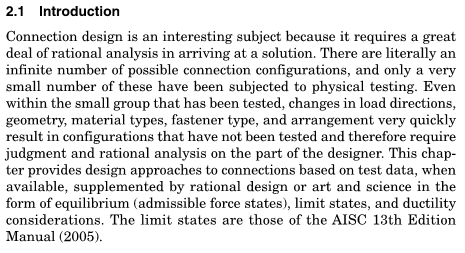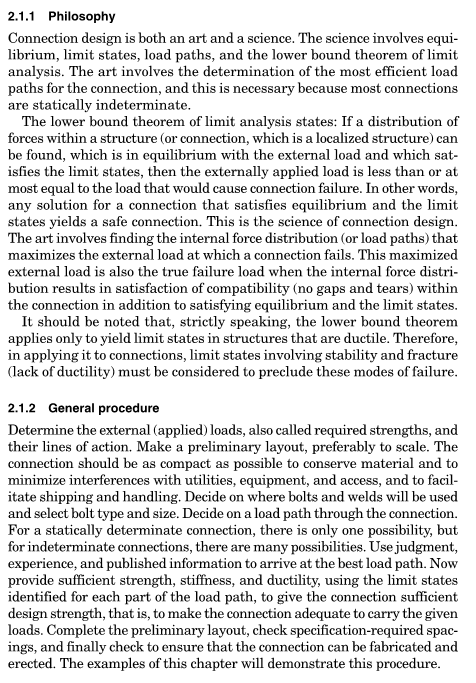awa5114
Structural
- Feb 1, 2016
- 135
In my work, I am frequently faced with the problem of transferring loads from larger structures to connections. It is not always easy to determine how a loaded element will transfer its load to an adjacent connection.Also, the standard "stick modelling" approach taught in most universities (based on Euler Bernoulli bbeam theory and the general stiffness method) really doesnt apply to connections. Does there exist any literature on the subject of load transfer and distribution to connections? I am specifically looking for simplified procedures that structural engineers can use in a non-academic context to quickly determine loading on bolts, screws, welds etc, without resorting to finite elements. Something one can do by hand or spreadsheet...

![[tongue] [tongue] [tongue]](/data/assets/smilies/tongue.gif)

